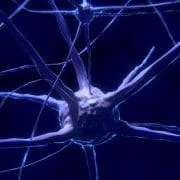Is Your Child Dealing with Weak Written Language Skills?
Weak written language skills, known as dysgraphia, can seriously impact school performance. While some children have learning difficulties in all academic areas, sometimes children with written language difficulties can keep up in the classroom with their reading and math, but they are unable to put their thoughts on paper and struggle with completing assignments. It is not unusual for them to be considered lazy. A teacher might say, “She is just lazy. I know she can read the material and she can answer the question if I ask her, but she doesn’t want to bother putting her work on paper.” Yet in a case of dysgraphia, it is extremely difficult for students to write their answers on paper. Their work is often “messy,” even with considerable effort. One of the most discouraging things they can hear is, “That’s too messy. I know you can do better. Erase it and start again!”
Fortunately there are interventions that can help improve written work, and special accommodations can be made in the classroom to ease the frustration of a written language disability.
To join our Forum discussion on written language skills please go here.
The International Dyslexia Association prepared the fact sheet below to help families and professionals have a better understanding of dysgraphia and what approaches can be useful.
What is dysgraphia?
What causes dysgraphia?
Does dysgraphia occur alone or with other specific learning disabilities?
Why is the diagnosis of dysgraphia and related learning disabilities important?
What kinds of instructional activities improve the handwriting of children with dysgraphia?
Do children with dysgraphia make reversals or other letter production errors?
What kind of instructional strategies improve spelling of children with dysgraphia?
Are educators in public schools identifying children with dysgraphia and providing appropriate instruction in public schools?
Are there research-supported assessment tools for diagnosing dysgraphia?
Dysgraphia is a specific learning disability that affects how easily children acquire written language and how well they use written language to express their thoughts.
Dysgraphia is a Greek word. The base word graph refers both to the hand’s function in writing and to the letters formed by the hand. The prefix dys indicates that there is impairment. Graph refers to producing letter forms by hand. The suffix ia refers to having a condition. Thus, dysgraphia is the condition of impaired letter writing by hand, that is, disabled handwriting and sometimes spelling. Impaired handwriting can interfere with learning to spell words in writing. Occasionally, but not very often, children have just spelling problems and not handwriting or reading problems.
Research to date has shown orthographic coding in working memory is related to handwriting. Orthographic coding refers to the ability to store unfamiliar written words in working memory while the letters in the word are analyzed during word learning or the ability to create permanent memory of written words linked to their pronunciation and meaning. Children with dysgraphia do not have primary developmental motor disorder, another cause of poor handwriting, but they may have difficulty planning sequential finger movements such as the touching of the thumb to successive fingers on the same hand.
Does dysgraphia occur alone or with other specific learning disabilities?
Children with impaired handwriting may also have attention-deficit disorder (ADHD)—inattentive, hyperactive, or combined inattentive and hyperactive subtypes. Children with this kind of dysgraphia may respond to a combination of explicit handwriting instruction plus stimulant medication, but appropriate diagnosis of ADHD by a qualified professional and monitoring of response to both instruction and medication are needed
Dysgraphia may occur alone or with dyslexia (impaired reading disability) or with oral and written language learning disability (OWL LD, also referred to as selective language impairment, SLI).
Dyslexia is a disorder that includes poor word reading, word decoding, oral reading fluency, and spelling. Children with dyslexia may have impaired orthographic and phonological coding and rapid automatic naming and switching. Phonological coding refers to coding sounds in spoken words in working memory. Phonological coding is necessary for developing phonological awareness—analyzing the sounds in spoken words that correspond to alphabet letters. If children have both dysgraphia and dyslexia, they may also have difficulty in planning sequential finger movements.
OWL LD (SLI) are disorders of language (morphology—word parts that mark meaning and grammar; syntax—structures for ordering words and understanding word functions; finding words in memory, and/or making inferences that go beyond what is stated in text). These disorders affect spoken as well as written language. Children with these language disorders may also exhibit the same writing and reading and related disorders as children with dysgraphia or dyslexia.
Why is the diagnosis of dysgraphia and related learning disabilities important?
Without diagnosis, children may not receive early intervention or specialized instruction in all the relevant skills that are interfering with their learning of written language. Considering that many schools do not have systematic instructional programs in handwriting and spelling, it is important to assess whether children need explicit, systematic instruction in handwriting and spelling in addition to word reading and decoding. Many schools offer accommodations in testing and teaching to students with dysgraphia, but these students also need ongoing, explicit instruction in handwriting, spelling, and composition. It is also important to determine if a child with dysgraphia may also have dyslexia and require special help with reading or OWL LD (SLI) and need special help with oral as well as written language. .
What kinds of instructional activities improve the handwriting of children with dysgraphia?
Initially, children with impaired handwriting benefit from activities that support learning to form letters:
- playing with clay to strengthen hand muscles;
- keeping lines within mazes to develop motor control;
- connecting dots or dashes to create complete letter forms;
- tracing letters with index finger or eraser end of pencil;
- imitating the teacher modeling sequential strokes in letter formation; and
- copying letters from models.
Subsequently, once children learn to form legible letters, they benefit from instruction that helps them develop automatic letter writing, using the following steps to practice each of the 26 letters of the alphabet in a different order daily:
- studying numbered arrow cues that provide a consistent plan for letter formation;
- covering the letter with a 3 x 5 card and imaging the letter in the mind’s eye;
- writing the letter from memory after interval that increases in duration over the handwriting lessons;
- writing letters from dictation (spoken name to letter form); and
- writing letters during composing for 5 minutes on a teacher-provided topic.
Students benefit from explicit instruction in spelling throughout K–12:
- initially in high frequency Anglo-Saxon words;
- subsequently in coordinating the phonological, orthographic, and morphological processes relevant for the spelling of longer, more complex, less frequent words; and
- at all grade levels in the most common and important words used for the different academic domains of the curriculum.
Throughout K-12, students benefit from strategies for composing:
- planning, generating, reviewing/evaluating, and revising compositions of different genre including narrative, informational, compare and contrast, and persuasive; and
- self-regulation strategies for managing the complex executive functions involved in composing.
Do Children with dysgraphia make reversals or other letter production errors?
Some children do make reversals (reversing direction letter faces along a vertical axis), inversions (flipping letters along a horizontal axis so that the letter is upside down), or transpositions (sequence of letters in a word is out of order). These errors are symptoms rather than causes of handwriting problems. The automatic letter writing instruction described earlier has been shown to reduce reversals, which are less likely to occur when retrieval of letters from memory and production of letters have become automatic.
What kind of instructional strategies improve spelling of children with dysgraphia?
If children have both handwriting and spelling problems, the kinds of handwriting instruction described earlier should be included along with the spelling instruction.
Are educators in public schools identifying children with dysgraphia and providing appropriate instruction in public schools?
In general, no. Although federal law specifies written expression as one of the areas in which students with learning disabilities may be affected, it does not clearly identify the transcription problems that are the causal factors in dysgraphia—impaired handwriting and/or spelling—for impaired written expression of ideas. Some of the tests used to assess written expression are not scored for handwriting or spelling problems and mask the nature of the disability in dysgraphia. Content or ideas may not be impaired. All too often, the poor writing or failure to complete writing assignments in a timely fashion or at all is misattributed to lack of motivation, laziness, or other issues unrelated to the real culprit—dysgraphia. Children who are twice exceptional—gifted and dysgraphic—are especially under-diagnosed and underserved. Teachers mistakenly assume that if a student is bright and cannot write it is because the student is not trying.
Are there research-supported assessment tools for diagnosing dysgraphia?
Yes. See Berninger (2007a) and Milone (2007) below for assessing handwriting problems associated with dysgraphia. Also, see Berninger (2007b) and Berninger, O’Donnell, and Holdnack (2008) for using these tests and other evidence-based assessment procedures in early identification, prevention, and diagnosis for treatment planning and linking them to evidence-based handwriting and spelling instruction (also see Troia, 2008).
In summary, dysgraphia is a specific learning disability that can be diagnosed and treated. Children with dysgraphia usually have other problems such as difficulty with spelling and written expression, as well as dyslexia and, in some cases, oral language problems. It is important that a thorough assessment of handwriting and related skill areas be carried out in order to plan specialized instruction in all deficient skills that may be interfering with a student’s learning of written language. For example, a student may need instruction in both handwriting and oral language skills to improve written expression. Although early intervention is, of course, desirable, it is never too late to intervene to improve a student’s deficient skills and provide appropriate accommodations.
Note: The International Dyslexia Association (IDA) thanks Virginia W. Berninger, Ph.D., for her assistance in the preparation of this fact sheet.









